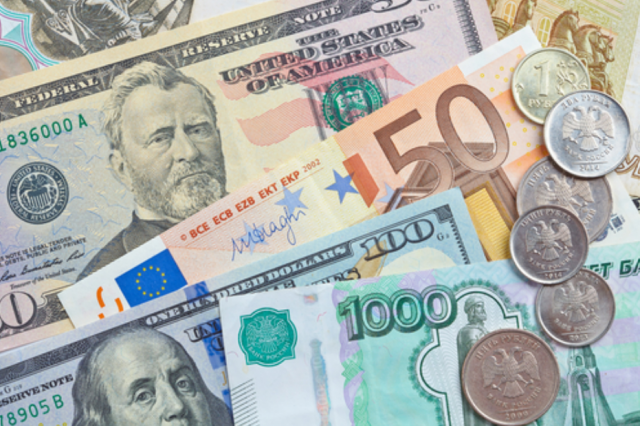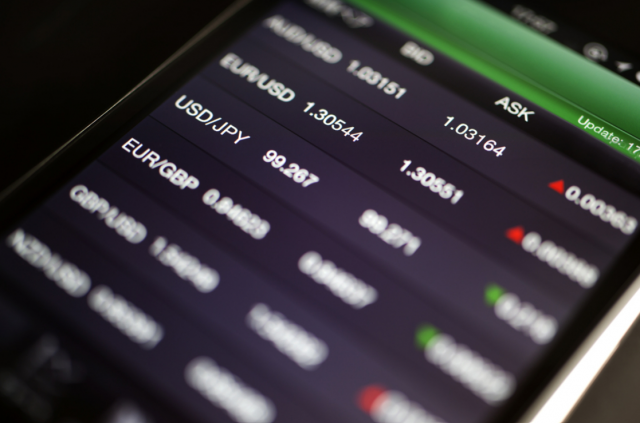
While looking for a diversified investment destination other than cryptocurrencies, you may have begun to be interested in FX trading, and have questions about the differences from cryptocurrencies and how to effectively manage FX.
Forex means trading to exchange currencies between two countries and aim for profit. In order to make a profit, it is common to aim for foreign exchange gains like “buy low and sell high” or “sell high and buy low”.
In this article, we will explain the overview of FX and the advantages and disadvantages compared to virtual currency in an easy-to-understand manner. In addition, let’s introduce basic knowledge of Forex, how to operate easily to make profits, and how to prevent the expansion of losses.
table of contents- Explain the difference between FX and virtual currency
- How to get profit in FX is “foreign exchange gain” and “swap point”
- Advantages of FX compared to virtual currency
- Disadvantages of FX compared to virtual currency
- 4 typical FX trading styles
- Add FX to your portfolio and aim for more investment opportunities
1. Explain the difference between FX and virtual currency

FX (Foreign Exchange) is called foreign exchange margin trading, and is a transaction that buys and sells legal currencies such as yen and dollars and gains profits from exchange fluctuations.
It means exchanging Japanese yen to US dollars, and US dollars to foreign currencies such as euros, in a similar way to foreign currency exchange when going abroad. For example, exchanging Japanese yen for US dollars is called “buying dollars and selling yen”, and exchanging US dollars for Japanese yen is called “buying yen and selling dollars”.
Keep in mind that there are differences in tax rates, transaction timing, etc. between virtual currency and FX, and that there are advantages and disadvantages that are unique to FX.
2. Ways to earn profits in FX are “exchange gains” and “swap points”

There are two ways to earn profits in Forex: exchange gains and swap points.
2-1. Foreign exchange gains due to exchange rate fluctuations
A common way to profit in Forex is to take advantage of exchange rate fluctuations.
As an example, let’s assume the case of buying the dollar and selling the yen.
If you set a buy position at 100 yen to the US dollar and make a settlement when the exchange rate becomes 120 yen to the US dollar due to the depreciation of the yen, you will make a profit of 20 yen. Conversely, if the yen appreciates and the price drops to 90 yen per US dollar after setting a buy position, and the settlement is made at that timing, a “10 yen loss” will occur.
The gains and losses resulting from these exchange differences are called exchange gains and exchange losses.
In addition, forex can be profitable not only by purchasing from a physical asset, but also by setting a selling position first and buying it back later. For example, if you set a sell position and go short at 100 yen to the US dollar, you will make a profit by closing when the dollar becomes weaker than when you set the position.
2-2. Swap points (interest income) generated from interest rate differentials
Furthermore, in Forex, it is possible to continuously obtain a small amount of profit called “swap point” generated by the interest rate difference of the trading currency pair.
Specifically, by setting a position to sell low-interest currencies such as the Japanese yen and buy high-interest currencies such as the Turkish lira, you can earn interest income according to the interest rate difference. On the other hand, if you set a position to sell a currency with a high interest rate and buy a currency with a low interest rate, you will incur a swap point payment.
How swap points are calculated:
年間のスワップポイント=保有数量×金利差×為替レート 1日のスワップポイント=年間のスワップポイント÷365日As an example, let’s calculate the swap points when actually selling Japanese yen and buying Turkish lira. If the interest rate in Turkey is 9.00% and the interest rate in Japan is -0.1%, you can get swap points of “17 yen / day” while holding 10,000 currencies.
トルコ9.00%-日本-0.1%=金利差9.10% 10,000通貨×金利差9.10%×7円/トルコリラ=6,440円/年 6,440円/年÷365日=17円/日By the way, the swap point will not occur unless the position is held until the next day, so you will not receive the interest for the day on the position you sold on that day.
3. Advantages of FX compared to virtual currency

First of all, I will introduce two advantages of FX that are not found in virtual currency. The point is safety and tax rate.
3-1. You can aim for profits in both rising and falling phases
Forex, as mentioned above, it is possible to enter from a selling position “short”. In spot trading, investment opportunities are basically concentrated in rising markets, but by combining shorts, it is possible to actively aim for profits not only in rising markets but also in falling markets.
This means that there are more opportunities to earn profits compared to spot trading. Of course, the risk of increasing losses will inevitably increase, but it can be said that it is ideal for investors who want to aim for high risk and high return through aggressive trading.
In addition, it is still fresh in our minds that exchange rates have had a major impact not only on investors but also on society at large, such as the sudden fluctuation of the dollar-yen exchange rate in 2022, which will result in a historic depreciation of the yen. There are quite a few FX investors who have made a lot of profit by riding this soaring and plummeting market.
In the future, it is pointed out that there is a possibility that this sharp reversal of dollar buying will occur, and it is expected that the market will continue to be easy for FX investors to aim for high returns.
3-2. Forex profit tax rate is uniform 20.315%
Forex and virtual currency differ in the taxation system applied to profits of 200,000 yen or more, and basically forex is more advantageous.
Taxes arising from FX profits are classified as “miscellaneous income related to futures trading” under the tax system, and are uniformly taxed at 20.315%. The taxation method is “separate taxation”, and basically a final tax return is required.
On the other hand, since the “progressive tax” system is applied to virtual currency profits, the maximum tax rate can be as high as 55% depending on the amount of income. Moreover, since it is subject to “comprehensive taxation”, taxable income is the sum of income other than virtual currency profits (salary income, etc.), so the tax rate tends to increase.
In this way, when comparing the tax system, it can be said that FX trading is easier to finish with less burden.
3-3. You can aim for a large profit with a small contribution due to the high leverage ratio
Leverage trading is a mechanism like a “lever principle” that allows you to trade with an amount several times higher than the margin deposited by the investor as collateral. It is attractive to raise capital efficiency and aim for a large profit with a small contribution.
One of the advantages of FX trading is that the leverage ratio is higher than virtual currency. Specifically, in domestic FX trading, the leverage ratio can be increased up to “25x”, while in domestic virtual currency trading, the leverage ratio is regulated to “2x” or less.
In general, FX has less volatility than cryptocurrencies and price movements are gentle. By combining these characteristics with the condition that the leverage ratio is wider than virtual currency, it is possible to realize more flexible trading than virtual currency trading.
For example, during periods when market movements are unstable, it is possible to lower the leverage ratio to reduce risk, and during periods when price movements are stable and the trend is easy to read, it is possible to use a large amount of leverage to enter the game.
4. Disadvantages of FX compared to virtual currency

Of course, forex trading is not all about benefits. Next, let’s explain the disadvantages of FX compared to virtual currency.
4-1. Trading hours are limited
Virtual currencies can be traded 24 hours a day, 365 days a year, but FX has a limited trading time.
Forex can be traded almost 24 hours a day on weekdays (Monday to Friday), but not on Saturdays and Sundays because the foreign exchange market is closed. Specifically, trading is not possible from around 5:00 am on Saturday to around 6:00 am on Monday in Japan time. Therefore, it will be a big limitation for investors who have few opportunities to trade on weekdays, such as office workers.
In addition, FX adjusts trading hours (U.S. daylight saving time system) during certain periods. Daylight saving time is a system that advances the time by one hour during the period from March to November, and this also affects the trading hours of Forex companies.
Even though it’s a one-hour difference, be careful not to forget the trading time and not miss the trading timing. Be especially careful when the market is volatile, such as when economic indicators are announced.
4-2. Possibility of losses exceeding margin
Since leveraged trading is the basis of FX, even if the deposited margin becomes 0 yen, the position will not be forcibly closed. Therefore, unlike virtual currency spot trading, there is a risk of loss exceeding the amount contributed.
In order to protect investors from this kind of loss risk, Forex companies have a forced settlement system called “loss cut”, but please be aware that there are cases where the loss cut cannot be made in time when the market changes suddenly. prize.
A historical example of a sudden change in the market is the Swiss franc shock that occurred in 2015. The Swiss Central Bank (SNB) abruptly unfixed the euro-Swiss franc exchange rate, sending the Swiss franc soaring against the euro and wreaking havoc on financial markets around the world.
In addition, under the “FX Margin Regulations” stipulated by the Cabinet Office, investors must immediately resolve the shortage of the required margin, and if it is not resolved, all positions will be forced to close. I’m here.
It is important to check the margin system of each Forex company and trade with sufficient funds.
5. 4 typical FX trading styles

Finally, let’s introduce the representative trading style of Forex. Many FX investors adopt one of the styles in the table below.
| scalping trade | seconds to minutes |
| day rate | during the day |
| swing trade | days to weeks |
| position trade | months to years |
5-1. Scalping trade
In Forex trading, it is a technique that repeats the most short-term trading. Repeat trades over a span of seconds to minutes and accumulate small profits.
If you can increase your trading win rate, you can make a big profit in total even in a short period of time. I can say
5-2. Day trading
It is a method of trading in a span of several tens of minutes to a day, and is characterized by not carrying over the position to the next day. By not straddling your positions, you avoid the risk of sudden market fluctuations and losses while you sleep.
Although it can be said to be less difficult than scalping trading, it is not a very suitable method for part-time traders because it basically requires trading throughout the day and checking the market frequently.
5-3. Swing trade
Swing trading is a method of buying and selling over a longer span than day trading, specifically 2 to 5 days. By setting a longer position holding period, the price range and profit that can be targeted in a single transaction will also increase.
Unlike the two methods mentioned above, swing trading is popular among part-time traders because it does not require constant monitoring of the market.
5-4. Position trading
Position trading is a method that anticipates the longest span as FX trading, trading for more than a week, or in some cases, months or years.
Since you only need to check the chart once a day, this method is also suitable for people who have little time to trade, such as office workers. Since it is easy to aim for swap profits in addition to foreign exchange gains, many investors who trade positions choose currencies with high interest rates to trade.
It is difficult to say that it is for beginners because it is necessary to analyze the prospects of long-term price movements from global economic trends, monetary policy, political issues, etc. before entry, but it is difficult to feel the psychological burden of short-term price movements. can be said to be an advantage.
Each of the above four trading methods requires different skills, so choose the method that suits your life cycle and experience.
6. Add FX to your portfolio to increase investment opportunities
In this article, we have summarized the features of FX compared to virtual currencies. Compared to cryptocurrencies, FX has the advantage of having more opportunities to earn profits, being advantageous in terms of taxation, and being able to make flexible transactions that make full use of leverage.
On the other hand, be aware of the restrictions on trading hours, the tendency for losses to swell, and the difficulty of market analysis.
How about adding FX, which has completely different characteristics from cryptocurrencies, to your portfolio to increase your chances of earning profits?
The post What is FX (Foreign Exchange Margin Trading) | Introduction of investment benefits compared to virtual currency appeared first on Our Bitcoin News.

 2 years ago
198
2 years ago
198














 English (US) ·
English (US) ·